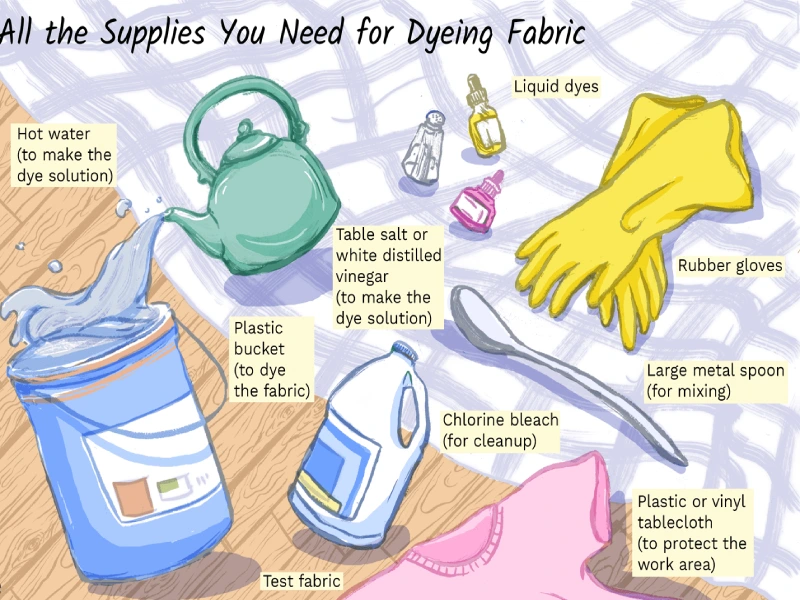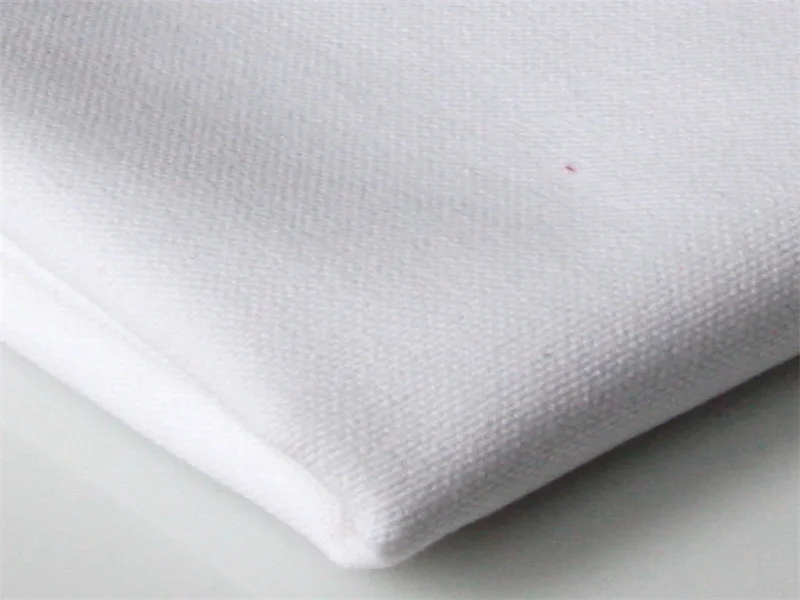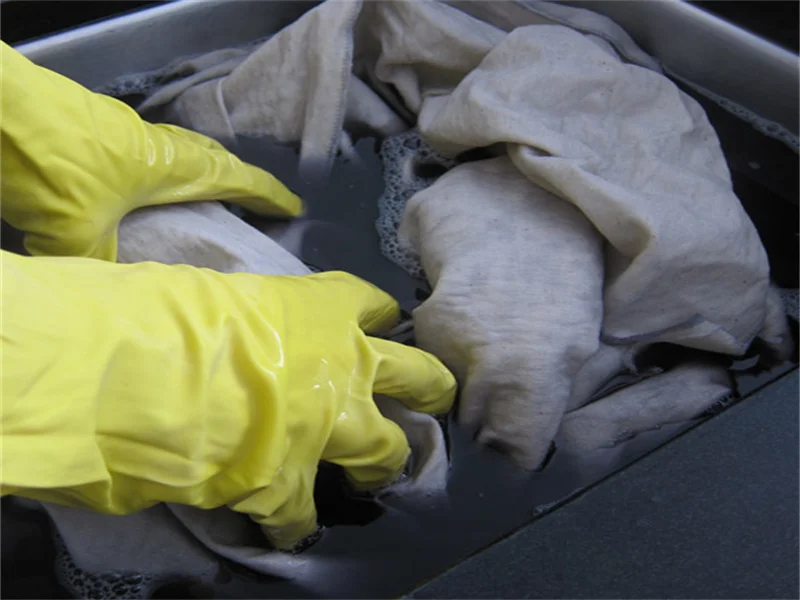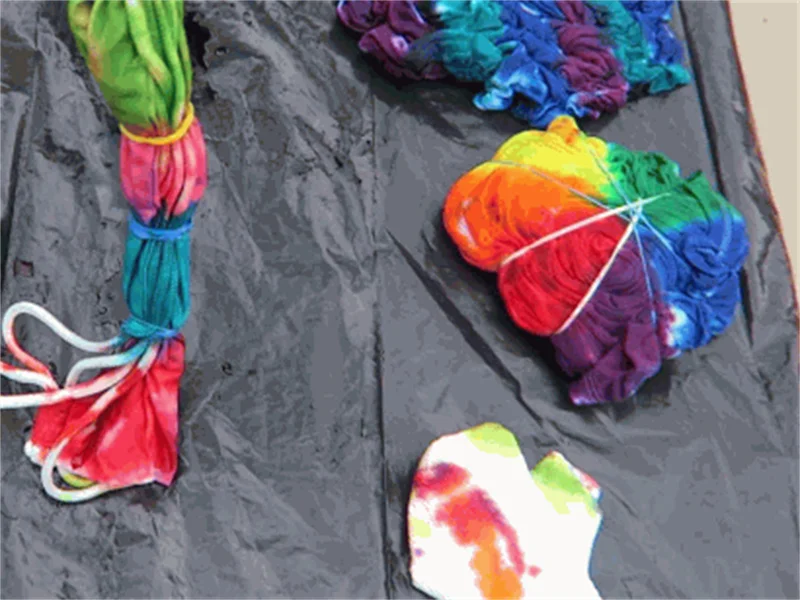Canvas fabric, renowned for its durability and versatility, is a staple in various creative and functional projects. Dyeing canvas fabric can infuse it with vibrant colors, giving your projects a personalized and unique touch.
Whether you want to customize a bag, interior decoration or create a stunning work of art, this comprehensive guide will show you how to dye canvas fabric, step by step to ensure you understand the entire process and dye it the color you want.
How to Dye Canvas Fabric
Dyeing canvas fabric opens up a world of possibilities for customization. While canvas is often associated with its natural, off-white color, dyeing allows you to match it to any color scheme, giving new life to old items or creating eye-catching new pieces.
This guide will help you understand the steps about how to color canvas fabric step by step in the following:
Materials Needed:

- Canvas Fabric
- Fabric Dye (preferably one formulated for cotton or linen)
- Large Plastic Container or Stainless Steel Pot
- Salt (for natural fiber dyes)
- Gloves and Apron
- Hot Water
- Stirring Stick or Spoon
- Mild Detergent (for pre-washing)
Step 1: Prepare the Canvas Fabric:

To begin, you need to pre-wash the canvas fabric to remove any sizing, oils, or residues that could interfere with the dye absorption. Use hot water and a mild detergent, ensuring the fabric is thoroughly cleaned. This step is essential for achieving even color distribution and preventing uneven dyeing.
Ensure the fabric is completely wet before introducing it to the dye bath. Wet fabric absorbs dye more evenly. You can soak the canvas in hot water for at least 30 minutes. This preparation ensures the fibers are fully saturated and ready to accept the dye.
If you are working with a large piece of canvas, ensure it is unfolded and free from creases. Creases can create uneven dyeing patterns. You may need to agitate the fabric gently to ensure it is fully submerged and saturated.
Step 2: Prepare the Dye Bath:
You should prepare the dye bath according to the dye manufacturer’s instructions. This typically involves dissolving the dye powder or liquid in hot water. The amount of dye and water will depend on the desired color intensity and the fabric’s weight. You can also add salt or soda ash as a fixative, depending on the dye type.
Ensure the dye is thoroughly dissolved and evenly distributed in the water. Stir the dye bath gently to prevent clumping. Maintain the dye bath at a consistent temperature, as recommended by the dye manufacturer. This ensures even and consistent dyeing.
If you are aiming for a specific color, test a small piece of canvas in the dye bath first. This allows you to adjust the dye concentration or soaking time to achieve the desired shade. Remember, the color will appear darker when wet and lighten as it dries. This is a crucial step when you are thinking about how to color canvas fabric precisely.

Dissolve the dye
Follow the instructions on the fabric dye package. Generally, the dye will tell you how much water to dye to mix. According to the instructions of the dye you bought, make a ratio. Of course, if you want the color to be more colorful and darker, you can adjust it slightly according to the instructions.
Then, in a large container or pot, dissolve the dye in hot water. Use enough water to completely immerse the fabric and make it easy to move. Make sure there is enough water, otherwise uneven dyeing may occur.
If the dye instructions require it, you can add salt to the dye bath (this helps natural fibers such as cotton absorb the dye).
Mix the dye thoroughly
Stir the dye solution until the colors are evenly mixed.
This step is essential to prevent mottled or uneven colors on the canvas.
Step 3: Dye the canvas fabric:

You should submerge the wet canvas fabric in the dye bath, ensuring it is fully immersed. Gently agitate the fabric to ensure even dye penetration. The soaking time will depend on the desired color intensity and the dye type. Follow the manufacturer’s instructions for the recommended soaking time.
Continuously stir the fabric to prevent uneven dyeing and ensure even color distribution. If you want a mottled or tie-dye effect, you can scrunch or fold the fabric before submerging it. This will create unique patterns and variations in color.
For darker shades, you may need to soak the fabric for a longer period. Regularly check the color by removing a small section of the fabric from the dye bath. Remember, the color will deepen as it dries.
Step 4: Rinse the Dyed Fabric:

You should rinse the dyed canvas fabric in cold water until the water runs clear. This removes excess dye and prevents bleeding. Gently squeeze out excess water. Wash the fabric with cold water and a mild detergent to further remove loose dye particles.
Avoid using harsh detergents or bleach, as these can fade or damage the dyed fabric. You can add a color fixative to the final rinse to further enhance color retention. Ensure the fabric is thoroughly rinsed to remove all traces of detergent.
After washing, you can air dry the fabric or use a low-heat setting on a dryer. Avoid exposing the dyed fabric to direct sunlight, as this can cause fading. Once dry, you can iron the fabric on a low setting to remove wrinkles. This is the last step for how to dye canvas fabric effectively.
Colored Canvas Fabric Benfits
Colored canvas fabric offers a versatile and visually appealing medium for various projects, combining the inherent durability of canvas with a spectrum of vibrant hues. The addition of color enhances the fabric’s aesthetic, making it suitable for decorative applications, artistic endeavors, and personalized creations. This customization allows for unique designs and tailored projects, from eye-catching home decor to distinctive fashion accessories.
Furthermore, colored canvas retains the robust qualities of untreated canvas, ensuring longevity and resilience in diverse applications.
Beyond its aesthetic benefits, colored canvas fabric provides practical advantages. The dyed fabric maintains its structural integrity, making it suitable for heavy-duty use while offering a wider range of design possibilities. This combination of strength and visual appeal makes colored canvas a preferred choice for projects that demand both durability and style.
Whether used for creating durable bags, artistic canvases, or vibrant outdoor furnishings, colored canvas fabric delivers both performance and aesthetic value.
Here are the key benefits of colored canvas fabric:
Enhanced Aesthetic Appeal:
- Offers a wide range of vibrant colors, allowing for creative and personalized designs.
- Adds visual interest to projects, making them more attractive and unique.
Versatile Applications:
- Suitable for diverse projects, including home decor, fashion accessories, and artistic creations.
- Allows for customization to match specific design requirements.
Maintained Durability:
- Retains the robust qualities of untreated canvas, ensuring longevity and resilience.
- Withstands heavy use and harsh conditions, making it suitable for practical applications.
Color Retention:
- Properly dyed canvas maintains its color vibrancy, even after washing or exposure to sunlight.
- Ensures long-lasting color intensity, contributing to the project’s overall quality.
Customization Options:
- Allows for unique color combinations and patterns, enabling personalized creations.
- Provides flexibility in design, catering to individual preferences and project needs.
Troubleshooting Common Issues about Dyeing Canvas Fabric
Dyeing canvas fabric can sometimes present challenges, such as uneven color distribution, fading, or unwanted patterns. Understanding these common issues and their solutions is crucial for achieving the desired results. Uneven dyeing often occurs due to inadequate fabric preparation or inconsistent dye application. Fading can result from using incorrect dyes or improper setting techniques. Addressing these issues ensures vibrant and lasting colors.
Another common problem is the formation of unwanted patterns or streaks, which can be caused by fabric folds or insufficient agitation during the dyeing process. Additionally, some dyes may not adhere well to certain canvas types, leading to poor color absorption. Selecting the right dye for the fabric type and following the manufacturer’s instructions are essential. Proper rinsing and washing techniques also play a crucial role in preventing color bleeding and maintaining the fabric’s integrity.
Here are common issues and troubleshooting tips:
Uneven Color Distribution:
- Ensure fabric is thoroughly pre-washed and wet before dyeing.
- Agitate fabric continuously during dyeing to ensure even dye penetration.
- Use a large enough dye bath to allow fabric to move freely.
Fading:
- Use high-quality dyes designed for canvas fabric.
- Follow dye manufacturer’s instructions for setting the color.
- Avoid harsh detergents and direct sunlight when washing.
Unwanted Patterns or Streaks:
- Unfold fabric completely before dyeing to avoid creases.
- Stir fabric frequently to prevent dye from settling unevenly.
- Use a consistent stirring motion to ensure even color distribution.
Poor Color Absorption:
- Select dyes appropriate for the canvas fiber type (cotton, linen, etc.).
- Pre-treat fabric with a mordant to enhance dye absorption.
- Increase soaking time in the dye bath for deeper color saturation.
Color Bleeding:
- Rinse fabric thoroughly in cold water until water runs clear.
- Use a color fixative in the final rinse to prevent bleeding.
Conclusion
Dyeing canvas fabric is a rewarding and creative process that allows you to customize and revitalize your projects. By following this comprehensive guide, you can achieve vibrant, professional results whether you’re dyeing for fashion, home decor, or artistic endeavors. Gather your materials, prepare your workspace, and embark on the exciting journey of transforming plain canvas into a colorful masterpiece. Happy dyeing!
